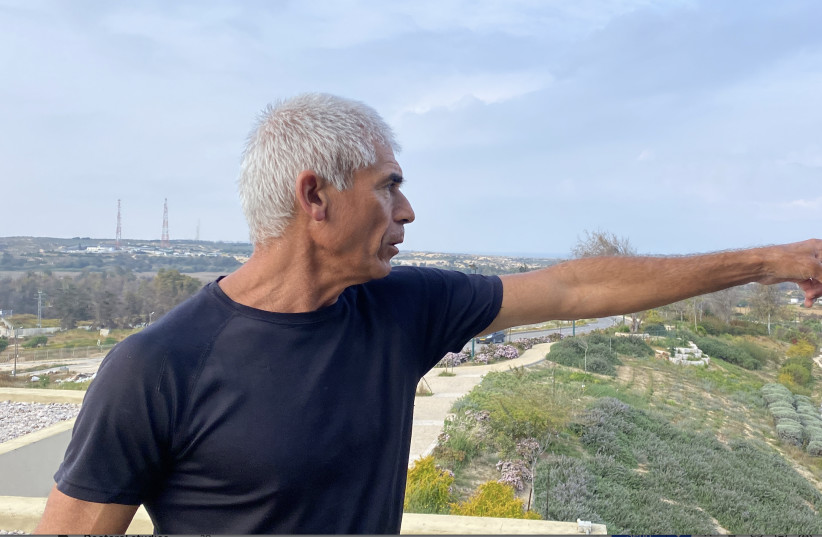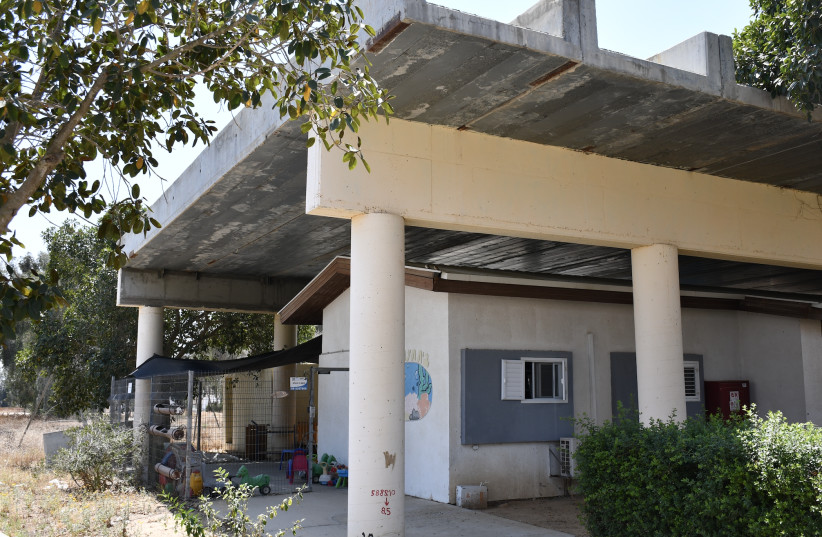North of the Gaza Strip, the surf is pounding the beaches south of Ashkelon. One of these beaches is known as Zikim, and it shares a name with a kibbutz on a hill above it.
This is a beautiful area. There is a small pond and stream near the beach, and dunes with small stout layers of brush stretch up from the waterfront toward the east. The dunes form a kind of frame to the area, setting off the kibbutz and a road that runs down to the sea from an industrial area of Ashkelon.
Today, this area is deserted. The beach, which once hosted the toned bodies of young men and women from the area who came to enjoy the spot, and the fishermen who would come on weekends to try their hand at a catch, are gone. It is all gone because Hamas attacked this beach on October 7, when it invaded two dozen points along the border with Israel and carried out its massacre.
I came to this area on October 8, trying to reach the coastal area because there are several IDF posts here. I thought that with the war unfolding, it might be a good place to find a story. At the time, I didn’t know there was still fighting going on in this area, and terrorists were lurking in the bushes and dunes.

I learned the area was an active combat zone when I came upon the bodies of two terrorists, and a still-running Savannah van parked next to them, on October 8 near the fence that runs around Kibbutz Zikim. The fighting here continued for days.
On October 11, several soldiers from the Maglan special unit were killed in this area. Flags with their names are now draped on a concrete shelter along the road. Inside, their comrades have written their names and left candles and a kippah in their memory.
Six months later
IT HAS been six months since that day. October 8 was the second day of the war. Six months later, I was in Kibbutz Zikim, looking out onto the road where I had encountered the dead terrorists and the van. A member of the community recalled the same scene unfolding on October 7 from inside Zikim.
Although terrorists were able to attack and infiltrate the IDF posts near the border, killing soldiers and massacring civilians on Zikim Beach, the kibbutz itself was saved by the quick response of its emergency response team and soldiers.
Today, the kibbutz seems like it is slowly returning to life, and some of the residents have returned. The community is laid out in a large circle, with houses facing the perimeter fence, looking toward the sea. It’s bucolic and beautiful. It is also filled with peacocks for some reason. The birds apparently escaped from a local small zoo and have infested the community for years. Because there are so few human residents, the animals seem to have the run of the place.
I spent October 7 and 8 traveling along the border with Gaza, seeing communities that faced the brunt of the attack on October 7 and also seeing those that were saved from the massacre. Each community has a story – stories of tragedy, bravery, and sometimes good luck that kept people safe.
Six months after the war began, it’s important to recall that these communities are still evacuated, their residents scattered around Israel. In many cases, the communities tried to stick together, but they face an uncertain future.
On the afternoon of October 8, the IDF said it had evacuated Be’eri, Nahal Oz, Netiv Ha’asara, and Zikim. While Zikim had been saved from the massacre, nearby Netiv Ha’asara, which is directly on the border with Gaza, was breached, and the terrorists murdered numerous members of the community. The terrorists also carried out massacres at Be’eri and Nahal Oz.
Nahal Oz is one of the hardest community’s to reach today because it is close to the border, and there is an IDF checkpoint on the road leading to it. All of these communities now have soldiers at their front gates, and permission is required to enter.
Nahal Oz is a unique case. To get to it, the road snakes down by the border. Several years ago, a large concrete wall was erected to shield the road from Gaza, and the wall was then painted with pastoral scenes and a giant mural indicating that the community was celebrating 70 years since its founding. Unlike Zikim, there is a sense it will take time before anyone can return to this area.
On October 8, the IDF also evacuated Nir Am, Mefalsim, Kfar Aza, Gevim, Or Haner, Ivim, Yad Mordechai, Karmiya, Kerem Shalom, Kissufim, Holit, Sufa, Nirim, Nir Oz, Ein Hashlosha, Nir Yitzhak, Magen, Re’im, Sa’ad, and Alumim.
Today, these communities have the same struggles that Zikim and Nahal Oz face. Their residents are living in different parts of Israel, and it is not clear when services will be available for people to return to or if people will feel secure enough to return.
In some communities, people return only for a few hours a day or several days a week. They might have jobs nearby, or they come to tend a garden or to do some kind of other work for the community. In the community dining halls, where there once would have been crowds or laughter, or plans for community events, there is often silence or only a few people huddled to eat.
IT’S HARD to make sense of this. On the one hand, the war in Gaza feels like it is winding down. At the highest point in Zikim, for instance, there is an old home built in 1920 by an Arab notable who had a citrus grove near here. From the roof of the old stately home, where sandbags are piled, probably from the early days of the war, one can see into Gaza. Smoke rises, and there is a rat-tat of machine-gun fire. But the sound of artillery and explosions is no longer common.
Further down the border, this is not always the case. Near the site of the Supernova music festival massacre, the sound of artillery is present. Everywhere along the border, the buzzing of drones is clear. But the heavy military presence of the first months of the war is gone.
It’s not normal, because normal would mean the civilian residents have returned. It’s abnormal. But it’s also not war, because much of the war seems to have paused, like a country taking a deep breath and then wondering what to do next.

What comes next at Kibbutz Sufa, for instance? It sits near the border and feels forlorn. At nearby Nir Yitzhak, there are square hay bales stacked in small mountains in warehouses. Clearly, the agricultural work has gone on at a fever pitch.
In fact, that’s another contrast on the border. Work goes on everywhere in the fields. In some cases, it is done by foreign workers, who can be seen riding motorized bikes to their work. Small Thailand flags flutter from the bikes.
In one field, a giant machine with long metal arms, like a massive mechanical bug in some kind of future apocalyptic movie, ambled along watering the field. It wasn’t even clear if there was a person on the machine, bringing a sense that the future here hangs in the balance between civilians returning and machines taking over.
This is not what the kibbutz pioneers of the late 1940s and 1950s had in mind when these communities were founded. They lived in tents and farmed. They took their bolt-action rifles, and later automatics, to the fields with them. They danced, and sang, and played sport. They served in elite units. They grew old.
Their descendants want to return, but so far, it is mostly the older people who express steadfastness and confidence. Those with children who were abandoned for many hours on October 7, and had to leave on October 8, face an uncertain future. How can they return and trust the state again to protect them?
The state hasn’t returned the hostages held in Gaza. There’s also a sense the government has abandoned these communities, that there is lack of caring for them, and that there is no government here. They are fending for themselves, like in the era of the British Mandate.
These communities were once the heart of the state’s endeavors to carve out the borders of Israel. But now they feel like they have become the ultimate periphery.
